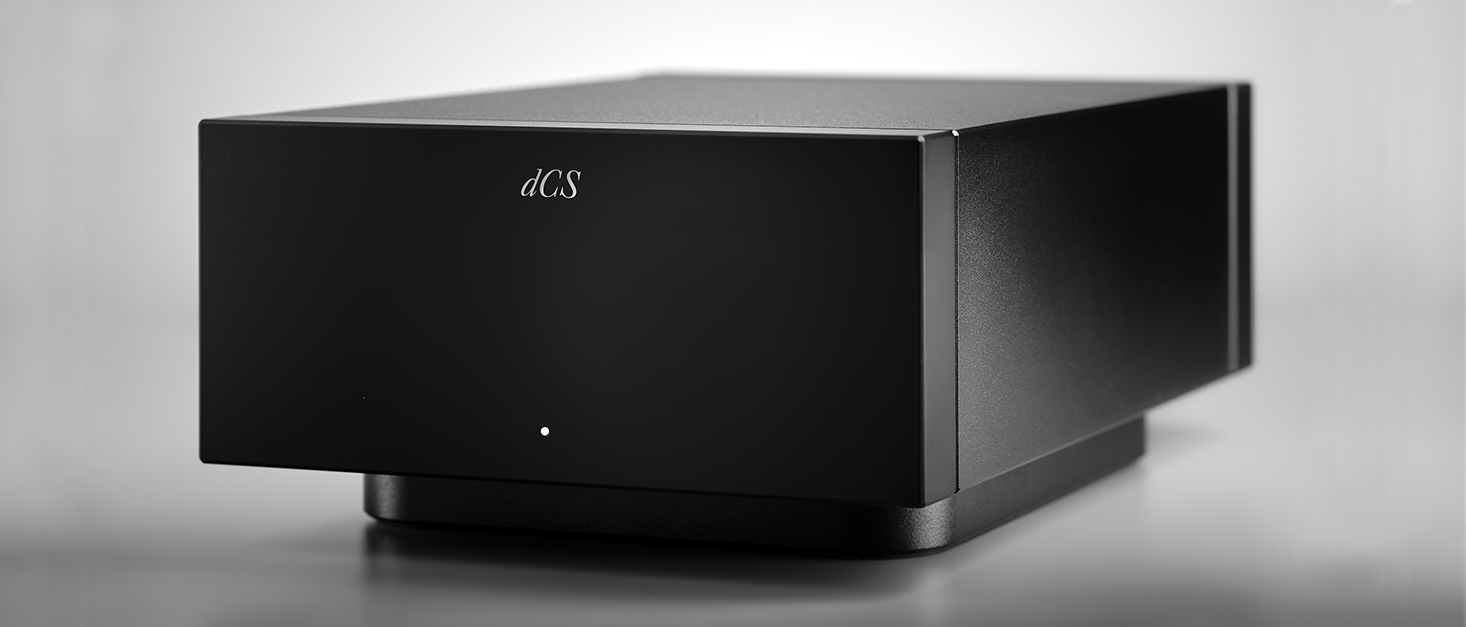
Designing The Lina Master Clock
In 1999, dCS pioneered the use of external clocks in digital audio systems with the release of the 992. The 992 was a master clock developed for use in professional recording and production studios, where engineers would often be running multiple converters simultaneously.
Tags: Lina, News, Technology & Innovation, Design & Craft, Innovation, Product,We designed the Grade 1 Lina Master Clock to minimise jitter and enhance audio performance when paired with the Lina Network DAC. Here, we explain its role within the Lina system and some of the unique features that help ensure it delivers an accurate and reliable clocking reference.
In 1999, dCS pioneered the use of external clocks in digital audio systems with the release of the 992. The 992 was a master clock developed for use in professional recording and production studios, where engineers would often be running multiple converters simultaneously. Its primary function was to deliver a precise reference signal, which the system used to synchronise the internal clock systems within separate components and ensure all of the devices within that studio were operating to the same master reference.
For engineers and producers, this reduced the risk of performance issues that could arise from clocks falling out of sync. Recordists discovered that master clocks also delivered some unexpected benefits. Shortly after the 992's release, we began receiving feedback from engineers and music professionals who claimed that adding a 992 to their setup had also led to some notable improvements in sound.
dCS went on to release another studio master clock, the 995 and the Verona, a master clock designed for use in home hi-fi systems. The feedback from both professionals and audio enthusiasts was the same: adding a clock delivered several sonic benefits; sharper imaging, enhanced soundstaging, and a greater sense of rhythmic movement and flow.
In the two decades since, dCS has developed a number of master clocks for use with its DACs, upsamplers, CD transports and network players. In addition to tracking measured performance, we have also carried out extensive research into the subjective effects of adding a master clock to a digital audio system, running various listening tests with music professionals and critical listening experts. In each one of our tests, we've discovered that the presence of a master clock has a profound impact on a system's subjective performance. "Measurements-wise, it's a pretty subtle effect … but we've been able to clearly demonstrate the audible effects of adding a Clock for over 30 years,” adds dCS Technical Director Andy McHarg.
Reviewers, customers, and retailers echoed what the recording professionals heard in the studio: Reviewing the Rossini DAC and Master Clock, What Hi-Fi? noted: “The Rossini DAC may be a superb performer in its own right, but add the Master Clock, and performance goes up a level or two. Given a suitably transparent system, there really is no doubting the increase in precision, solidity or transparency." Likewise, head-fi.org’s Jude Mansilla experienced a significant improvement in the Bartók Headphone DAC’s performance after listening with a Rossini Master Clock at CanJam Singapore, noting in his impressions from the show: “Wow. It's an obvious difference – an obvious improvement. The imaging, which I'd actually been completely satisfied with, with the Bartok alone, went into holography mode.”
When it came to developing dCS Lina – our first-ever system purpose-built for headphone playback – we wanted to ensure headphone listeners could experience the best possible sound from their system. Accordingly, we set about creating a bespoke master clock to support the Lina Network DAC and Headphone Amplifier.
Like all dCS master clocks, the Lina Master Clock is a standalone device with one purpose: to deliver a precise and reliable clocking reference signal. We designed it to work in tandem with the Lina Network DAC's internal clock system to minimise jitter and reduce the risk of clocking inconsistencies or errors.
The Lina Master Clock is not essential to the Lina system. Both Lina DAC and Lina Headphone Amplifier can operate as standalone components. Instead, the Lina Master Clock provides a secondary, highly accurate reference to which the DAC can lock. [You can find more information on this in Part 4 of our online series covering the basics of clocking in digital audio, which you can read here.]
“In many respects, the master clock acts pretty much like a conductor in an orchestra, keeping all the different members of the orchestra in sync," explains Chris Hales, Director of Product Development at dCS. "Our master clocks are a bit more complicated in that we have two base sample rates that we have to cope with [44.1kHz and 48kHz], but in effect, these two synchronising signals are presented to all of the elements in a digital audio system, and our DACs intelligently know, for the sample rate they’re being asked to play, which of the clocks to pay attention to, and are therefore [able] to keep everything synchronised correctly.” This dual-crystal design delivers accurate clocking for all audio sample base rates.
The Lina Master Clock’s standalone design also allows us to minimise the risk of clocking interference. As dCS Technical Director Andy McHarg points out, a DAC might need to draw more or less current depending on the signal it is processing. These variations in draw can impact a clock's performance if it is on the same PCB as the DAC itself. A dedicated master clock operating on its own separate circuit board with its own dedicated power supply avoids this problem entirely. With clocking components housed in a separate chassis, there is also less risk of crosstalk [electromagnetic interference], power interference, and disturbance due to physical movement or vibration.
A dedicated master clock also helps to ensure that clocking remains consistent throughout a system's lifespan: "By phase-locking the clock that's in the DAC to the Lina clock reference, the frequency over time and over the life of the product is much more stable," explains Chris Jones, Senior Electronics Design Engineer at dCS.
The Lina Master Clock uses the same core technologies as our Rossini and Vivaldi Master Clocks, including dCS's unique Phase-Locked Loop system, which synchronises clock frequencies.
Lina's all-new mechanical and industrial design results in our smallest and most streamlined master clock yet. Encased in solid aluminium, with a matt black painted finish, it benefits from technologies that have been developed and refined over three decades and is tailor-made for use with the dCS Lina product series. The Lina Master Clock is powerful, accurate, and reliable and significantly enhances audio performance when paired with the Lina Network DAC.
Whilst it is possible to use a Lina Network DAC without a Master Clock, our product tests revealed the clock delivered a range of subjective benefits – resulting in a more natural, three-dimensional, and vivid sound. This is no surprise, given what we've discovered from three decades of developing clock systems and clocking technologies. From the beginning, we stipulated our first head-fi system should include a dedicated master clock. At dCS, clocking is a critical part of digital playback, providing clear benefits that enhance the performance of an audio system. We felt it was essential to give the listeners the option of having a standalone clock designed to deliver the utmost precision.












